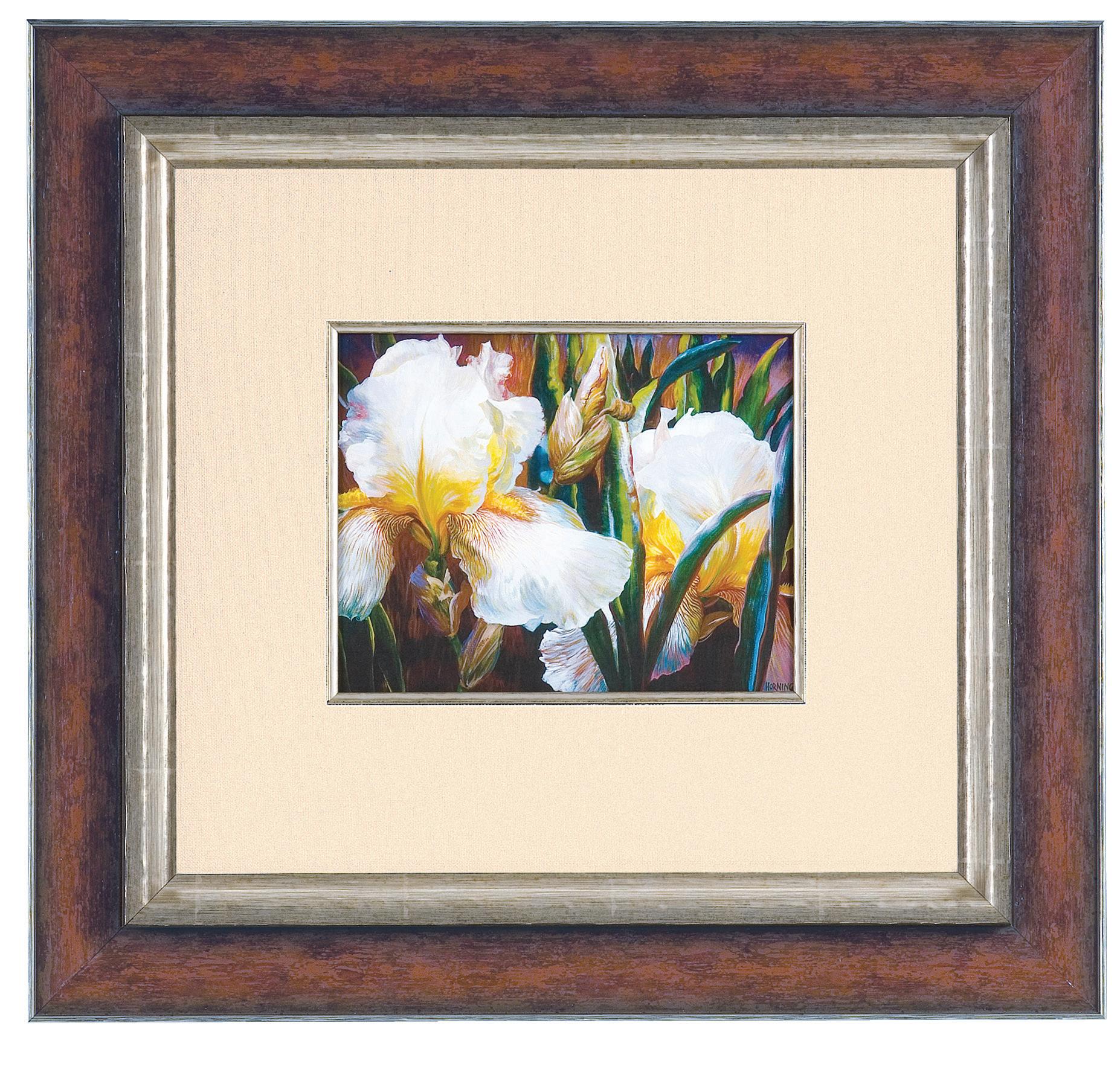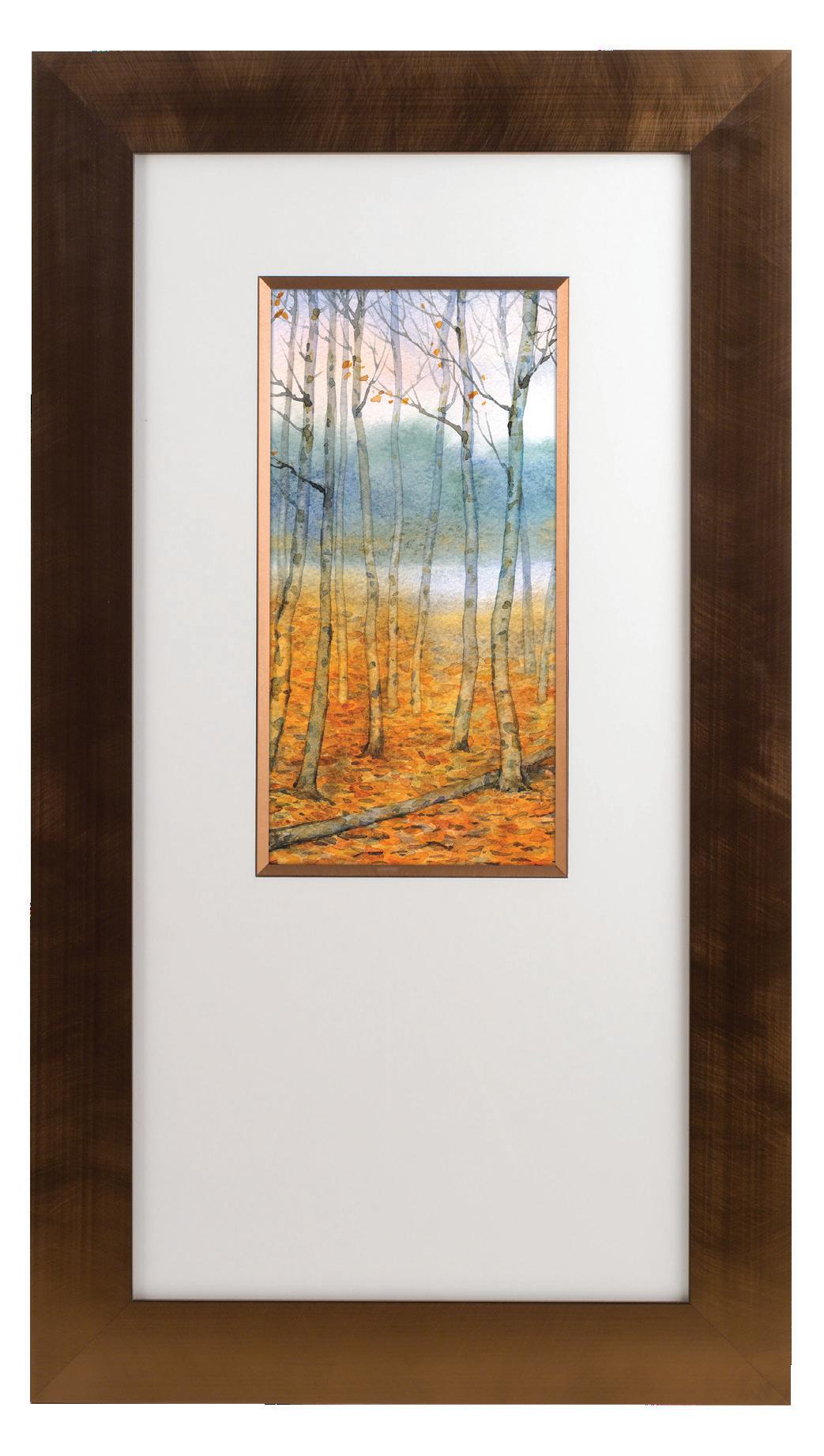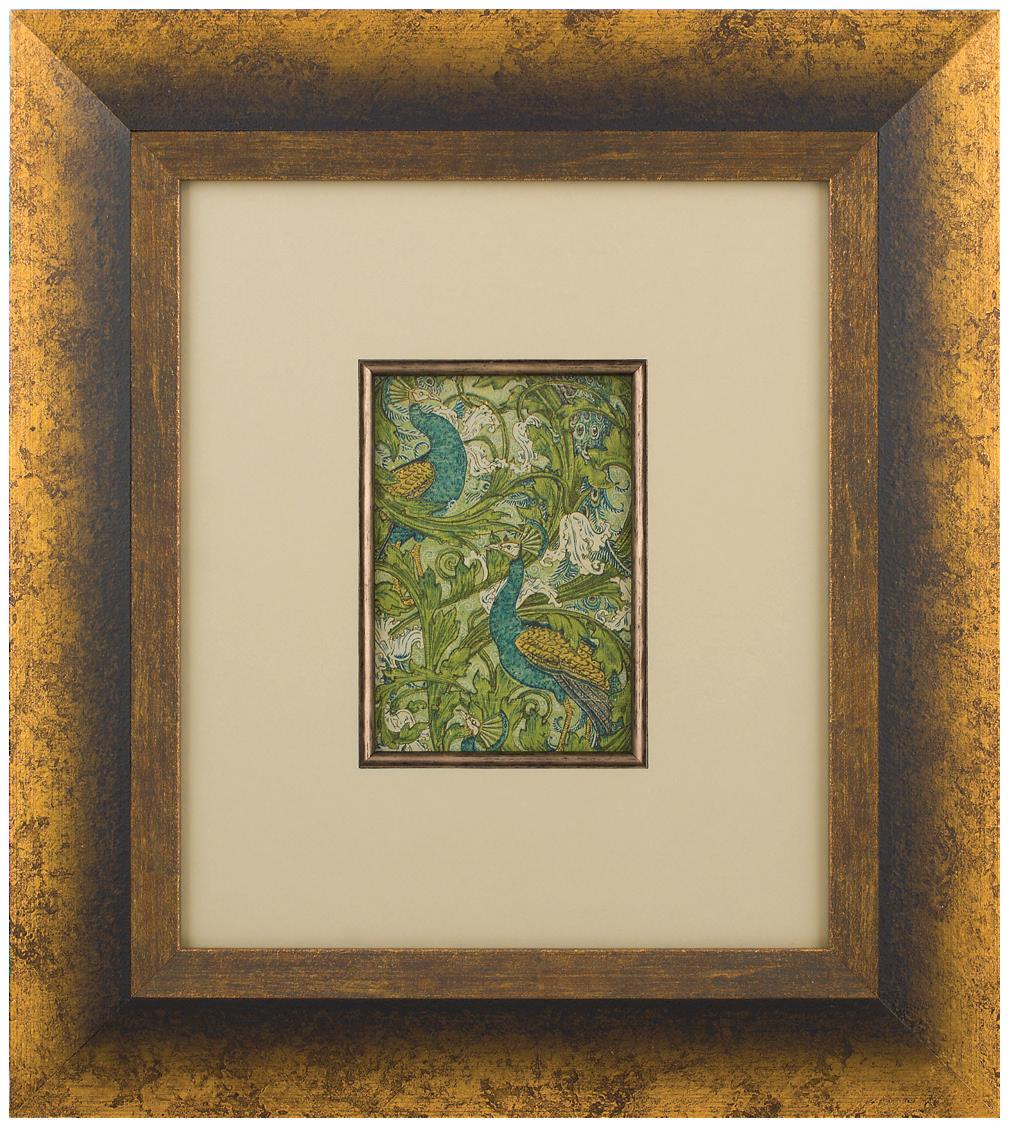
6 minute read
Moulding masterclass – the magic
THE MAGIC OF FILLETS
A MASTERCLASS WITH JON PRICE GCF (APF)
Advertisement
Many of us are aware of fillets and may even use them from time to time. But for most framers fillets aren’t exactly mainstream. And yet, unless they are done particularly badly, fillets generally look good, add value and bring a quality feel to a frame. All the more reason to incorporate them in to your daily framing. Fillets are essentially a highlight or accent which can be utilised to add balance and cohesion to a frame design. They can also add interest, increase depth or be used to contrast a moulding or mount. In fact, there are a lot more ways to make use of fillets than you might realise. I’m all about making my frame designs stand out. I like to utilise elements that add value and increase profitability. Which means fillets float my boat, and the more innovative the way in which the fillets are used the better.
183 100 340

Inside the mount aperture
This is the classic use for fillets, which are designed with a flat section that fits under the inside edge of a window mount aperture. Fillets are often produced as a part of a moulding range. So they match that range’s colours, style and texture. This makes them perfect for a balanced frame design, where you have a matching window mount fillet and moulding (see Pic.1). I regularly use a similar idea, but with a narrow second mount matching the moulding colour. However, like a paper doily under a plate of biscuits, matching a fillet to the moulding is classier and adds to the frame’s perceived value. If you would like to see how to cut and fit a fillet inside the aperture of a window mount, please see: https://larsonjuhl.co.uk/haven/vids/jon-price-masterclass.

Pic 1
A variation on this concept, is a mount aperture fillet that matches an aspect of the frame. For example, a silver fillet matching the silver rebate lip of a moulding (see Pic.2), or a fillet which matches an accent or tone within the frame (see Pic.3). On the other hand, a mount aperture fillet can be used to contrast the frame and draw attention to details within the artwork (see Pic.4). Drawing attention back to the artwork is one of the things a mount fillet does really well, normally more so than a second mount. This means that using a mount fillet as part of a frame design can allow you to select a wider or more ornate frame which would otherwise detract from the artwork (see Pic.5). So, next time you’re thinking ‘that frame would be perfect if it weren’t so big’, try incorporating a mount fillet into the design. It is worth noting that the wider the fillet is the more it will draw attention away from a heavy frame and back to the artwork. More on that in a bit.


Pic 3




Pic 6
Under the rebate lip
Fillets are also known as mount slips, however that doesn’t mean that they can only be used inside a mount aperture. Gluing a fillet under the rebate lip of a moulding is fiddly but it can look very good. A fillet used in this way adds an extra dimension to a frame. For example, you can add a gold lip, or use a contrasting fillet colour that emphasises an aspect of the artwork (see Pic.6). You could also use matching fillets both under the rebate lip and inside the window aperture to balance a design. How about simply placing a matching fillet from a moulding range inside the rebate lip, just to add subtle detail to a moulding?
A note on conservation
Just like a wooden frame moulding, fillets are acidic. This means they shouldn’t be placed up against paper or textile based artwork when conservation framing because over time that acidity will leech into the artwork. The standard way of avoiding this problem is to line the fillet with a conservation quality sealing tape, or to use an additional window mount between the fillet and the artwork.
So there you have it, more creative ways to use fillets than there were cabinet staff at a Number 10 lockdown party. However, as you finish reading this article the question is: Do you forget it and carry on working in the way you always have done, or do you make a display frame, mount, or even just a chevron, that incorporates fillets and use that display piece to sell fillets to your customers? Choose wisely and you might just find yourself being more creative and selling higher priced framing. Jon Price GCF (APF) has framed for world renowned museums, artists, photographers and designers. He offers one-to-one and small group framing education and owns Handmade Framing & Gallery near Bude, North Cornwall. www.handmadepictureframing.co.uk
Stacking fillets
Just like mouldings, fillets can be stacked. You might choose to do this just because it looks funky or because you want to use that wide or ornate moulding that we talked about earlier and a single fillet on its own isn’t strong enough to draw attention back to the artwork. Stacked fillets can match each other or you can use contrasting colours, for example, one which matches the moulding and one which emphasises an aspect of the artwork. Likewise, you could also stack a plain fillet and an ornate fillet. As always, the key is to play around, be creative and see what works.
More creative ideas
For me, one of the joys of framing is the creative process. If you want to allow time to try out new creative ideas you have to price your framing and manage your time accordingly. However, in my experience, those new ideas become show pieces that sell framing techniques to my customers. Hopefully, you will have found some new ideas in what you’ve read above, but here are a few more ways to incorporate fillets into a frame design:
■ Multiple stacked shadow mounts, each with fillets, to create depth or perspective - a good way to give a small object a lot of presence.
■ A multi-aperture mount, each aperture lined with a fillet – a good way to emphasise a collection of small or intricate items, drawing the viewer’s attention away from the frame and back to the artwork.
■ Fillets used as a miniature frame inside a larger frame, for example for ‘close framing’ a photograph. Obviously, there are depth limitations and the fillet would have to be cut backwards so that the part that normally slips under the edge of a mount aperture would sit under the artwork instead.

183 100 340










